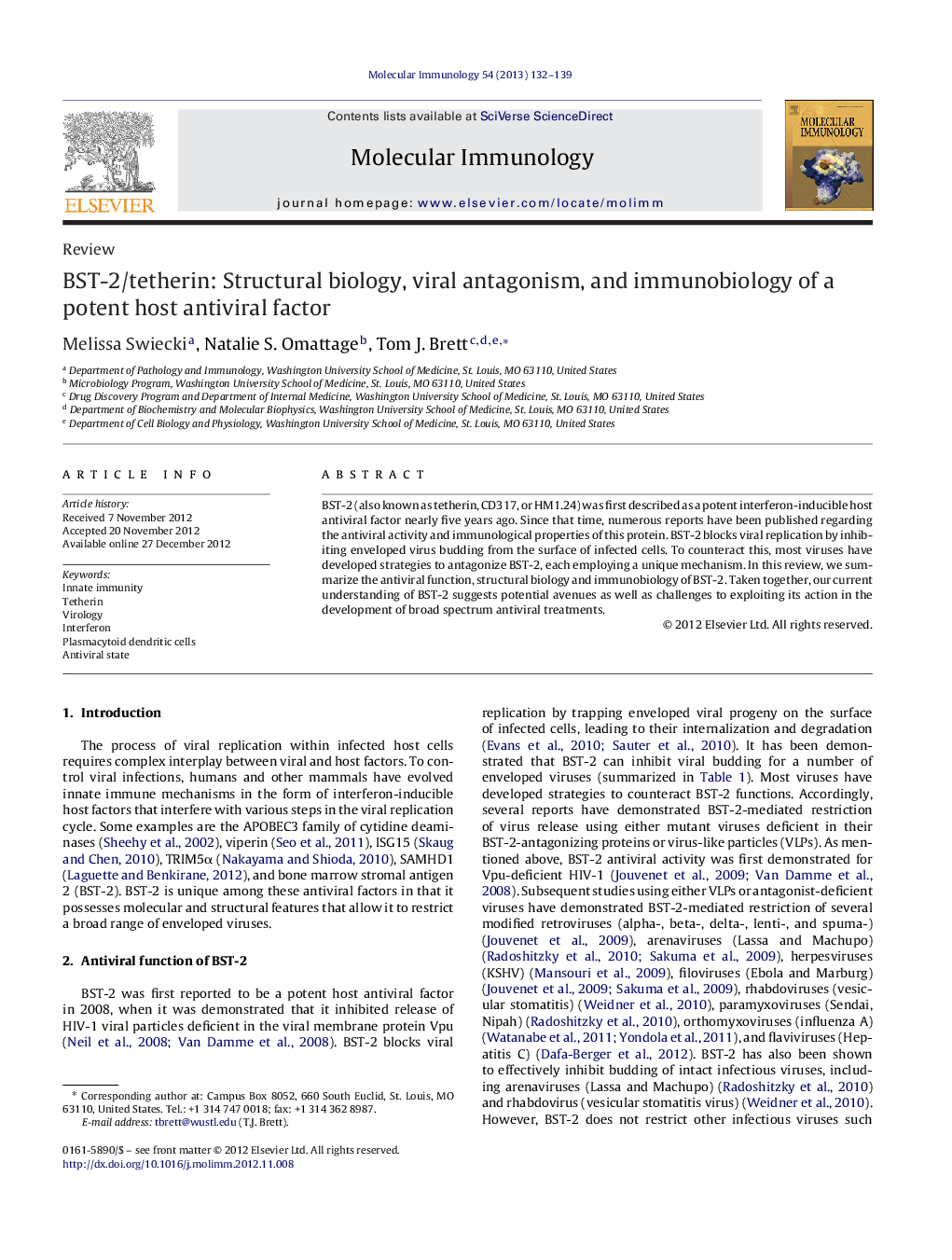| Article ID | Journal | Published Year | Pages | File Type |
|---|---|---|---|---|
| 2831151 | Molecular Immunology | 2013 | 8 Pages |
BST-2 (also known as tetherin, CD317, or HM1.24) was first described as a potent interferon-inducible host antiviral factor nearly five years ago. Since that time, numerous reports have been published regarding the antiviral activity and immunological properties of this protein. BST-2 blocks viral replication by inhibiting enveloped virus budding from the surface of infected cells. To counteract this, most viruses have developed strategies to antagonize BST-2, each employing a unique mechanism. In this review, we summarize the antiviral function, structural biology and immunobiology of BST-2. Taken together, our current understanding of BST-2 suggests potential avenues as well as challenges to exploiting its action in the development of broad spectrum antiviral treatments.
► BST-2 is a host antiviral protein that inhibits release of progeny enveloped viruses from infected cells. ► Inhibition may occur by direct tethering or arresting scission. ► Unique structural features of the ectodomain optimize it for function. ► Viruses encode antagonists that inhibit BST-2 via diverse mechanisms. ► Analysis of mice suggests other biologic functions.
